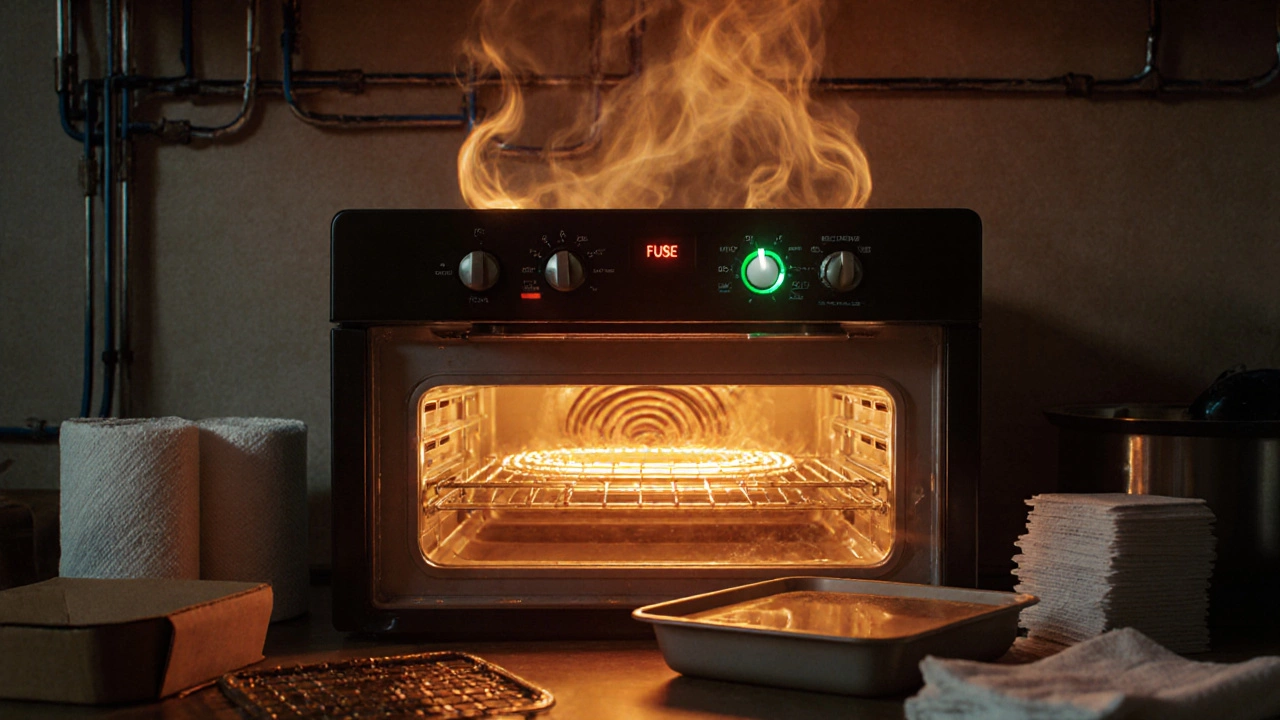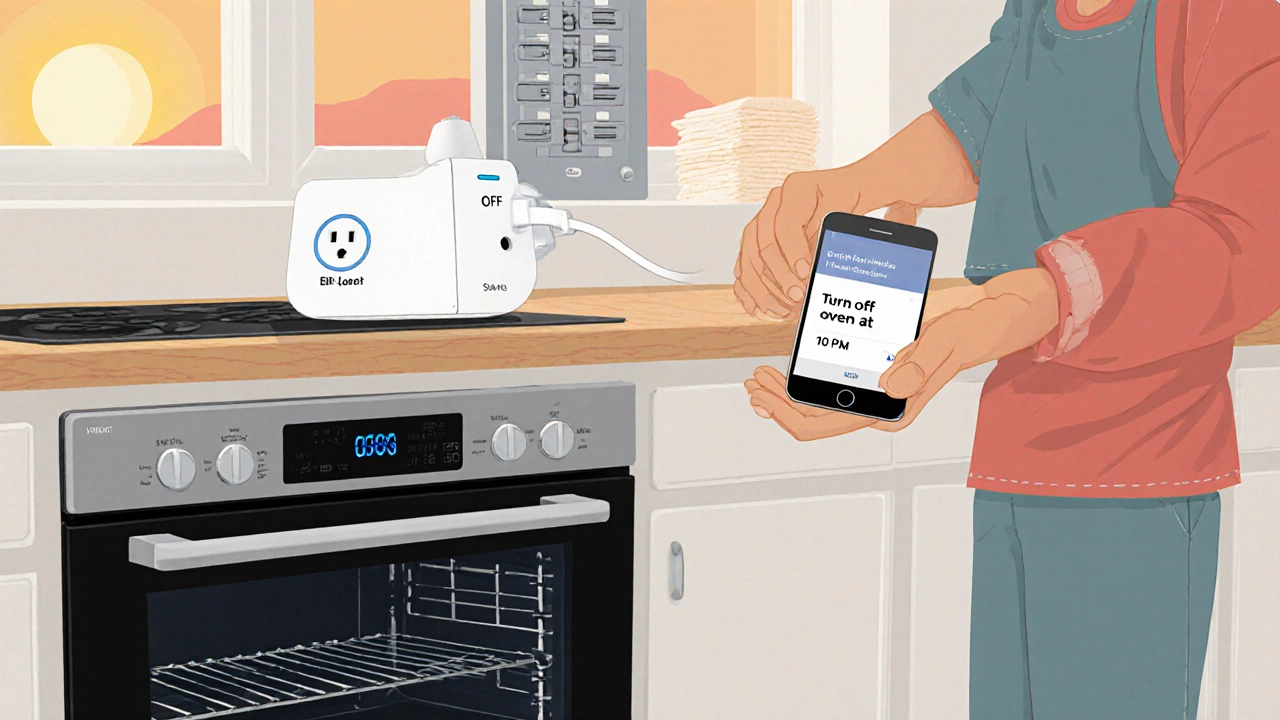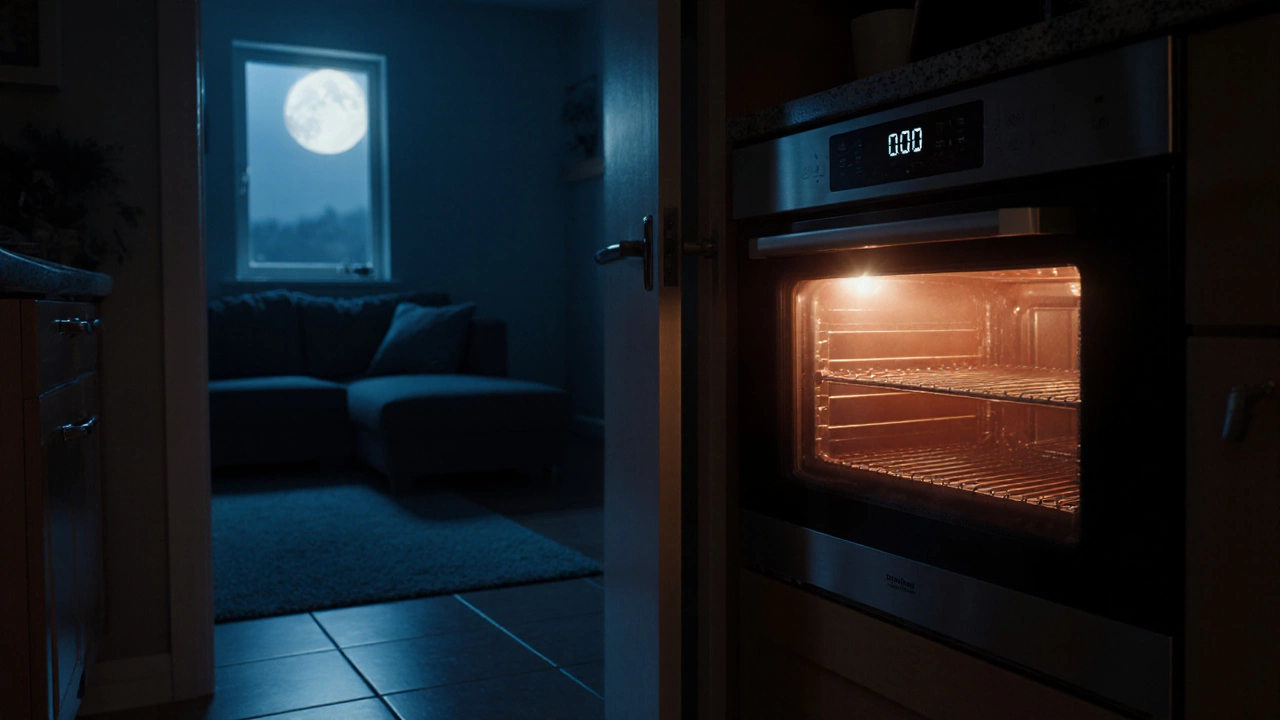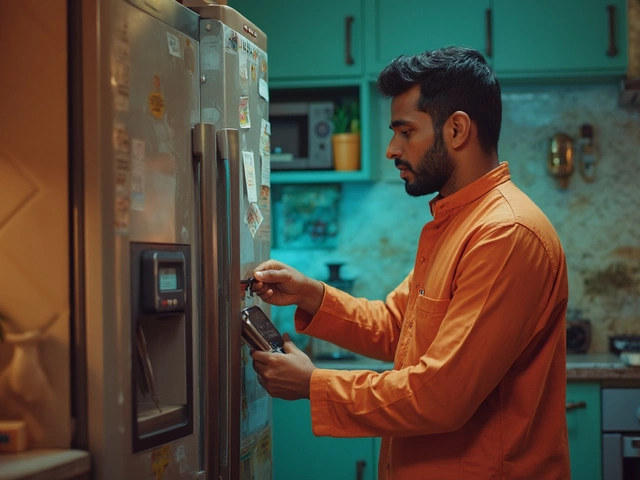Oven Energy Cost Calculator
Ever wondered if leaving your electric oven is a recipe for disaster? You’re not alone. Homeowners often forget to switch it off after late‑night baking or set‑and‑forget meals. Below we break down what really happens when an electric oven stays on all night, the safety mechanisms at work, and practical steps to keep your kitchen-and your peace of mind-intact.
How an Electric Oven Generates Heat
To grasp the risks, first know the core parts that turn electricity into hot air. The heating element is a coil made of a resistance material-usually nichrome-that glows when current passes through it. A thermostat monitors the interior temperature and tells the element when to power up or down, aiming to keep the set temperature stable.
Modern ovens also include a safety switch (or thermal fuse). If the temperature climbs far beyond the set point, the switch cuts power to prevent overheating. These components work together to make baking predictable-but they’re not invincible.
What Could Go Wrong Overnight?
Leaving the oven on all night amplifies three main dangers:
- Fire hazard: Prolonged heat can ignite nearby flammable items-paper towels, cardboard trays, or a grease‑covered rack. According to the National Fire Protection Association, cooking equipment causes over 50% of home fires, and unattended ovens are a common culprit.
- Energy waste: An average electric oven consumes about 2-3kW. Running it for eight extra hours can add 16-24kWh to your bill, roughly $2.50‑$4.00 per night depending on local rates.
- Electrical stress: Continuous load stresses the electrical circuit feeding the oven. Over time this can degrade wiring insulation and increase the chance of a short circuit.
While many ovens have built‑in safeguards, they’re designed for normal cooking cycles-not marathon overnight runs.
Built‑In Safeguards: How Much Protection Do You Really Have?
Most newer models feature:
- Auto‑shutoff timers: After a preset period (often 2‑12hours), the oven powers down automatically.
- Cool‑down cycles: The thermostat reduces power once it detects the desired temperature has been reached, preventing the element from staying at full heat.
- Thermal fuses: The safety switch trips if temperatures exceed safe limits-usually around 600°F (315°C).
These are great, but they’re not foolproof. A faulty thermostat or a broken thermal fuse can leave the oven running unchecked. That’s why understanding the limits of these safeguards matters.

Immediate Steps If You Realize the Oven Was Left On
Don’t panic, but act fast:
- Turn it off at the control panel. If the controls are unresponsive, switch off the dedicated circuit breaker.
- Check for smoke or unusual smells. If you notice anything burning, open windows, extinguish any small flames with a fire blanket, and call emergency services if needed.
- Inspect the interior once it cools. Look for melted racks, charred insulation, or discoloration on the heating element.
- Test the oven on a low temperature for a few minutes to verify it heats evenly without tripping the safety switch.
If anything seems off-odd noises, uneven heating, or persistent error codes-reach out to a qualified appliance repair service before using it again.
Prevention: Simple Habits to Avoid Overnight Oven Mishaps
Turn the “what‑if” into “never.” Here are easy, low‑cost tricks:
- Use the built‑in timer every time you bake. Even if you’re not staying up, set the timer to shut off after the expected cooking window.
- Install a smart plug that can be controlled via phone. Many models let you remotely turn the oven off or receive alerts if it stays on too long.
- Set a phone reminder before you start cooking. A quick “Turn off oven at 10pm” alarm can save you from forgetfulness.
- Keep flammable items away. Store towels, paper, and food packaging elsewhere while the oven is running.
- Regular maintenance: Clean the interior and check the heating element for buildup. A clean oven runs more efficiently and reduces overheating risk.
These habits don’t just protect you from fire; they also shave a few dollars off your electric bill each month.
Comparing Overnight Risks: Electric Oven vs. Gas Oven vs. Microwave
| Appliance | Typical Power Use (kW) | Fire Hazard Level | Energy Cost (8hrs, $0.15/kWh) | Built‑In Auto‑Shutoff |
|---|---|---|---|---|
| Electric Oven | 2.5 | Medium - heat can ignite nearby items if left unattended | $3.00 | Often, but reliability varies by model |
| Gas Oven | ~0.5 (gas BTU equivalent) | High - open flame + gas leaks increase fire/explosion risk | Negligible electricity; gas cost ~$0.60 | Rare; many lack automatic cutoff |
| Microwave | 1.2 | Low - enclosed cavity limits open‑flame hazards | $1.44 | Typically includes auto‑shutoff after 30min |
Even though the microwave’s fire risk is lower, it still consumes energy and can overheat food. The gas oven tops the danger chart because a stray spark or gas leak can lead to a flash fire, making the electric oven the middle ground-but still not a “set‑and‑forget” appliance.

When to Call a Professional
If you notice any of these signs after an overnight run, it’s time to involve the experts:
- Persistent error codes such as “E0” or “F1” that don’t clear after a reset.
- Visible damage to the heating element, cracked glass door, or melted wiring.
- Unusual smells (burnt plastic, ozone) that linger after the oven cools.
- Frequent tripping of the circuit breaker when the oven is turned on.
- Inconsistent temperature readings-e.g., the oven says 350°F but food always burns.
A qualified appliance repair service can test the thermostat, replace a faulty safety switch, or upgrade the wiring to meet current electrical codes. Fixing the issue early avoids costly replacements and keeps your home safe.
Bottom Line: Is Leaving an Electric Oven On All Night Bad?
Short answer: yes, it’s risky. Even with modern safety features, an unattended oven can ignite nearby items, waste electricity, and strain your home’s electrical system. Long‑term, those risks add up-both in dollars and in safety concerns.
But armed with the right habits-timers, smart plugs, regular clean‑ups-and a quick checklist for after‑hours use, you can drastically lower the odds of a disaster. And if anything feels off, don’t gamble; call a professional.
Frequently Asked Questions
Can an electric oven cause a house fire if left on?
Yes. If flammable items are near the oven or if a safety switch fails, the heat can ignite a fire. The risk isn’t 100% but it’s significant enough to warrant caution.
Do all electric ovens have auto‑shutoff timers?
Most modern ovens include an auto‑shutoff, but the feature varies by brand and model. Older or budget models may lack it, so check your user manual.
How much extra electricity does an oven use overnight?
A 2.5kW oven running for eight extra hours adds about 20kWh, which translates to roughly $3.00‑$4.00 depending on local rates.
What should I do if the oven won’t turn off?
First, switch off the dedicated circuit breaker. Then, call an appliance repair service to troubleshoot the thermostat or control board.
Is a smart plug safe for controlling an electric oven?
Only use smart plugs rated for at least 15A and specifically listed for high‑power appliances. Improper plugs can overload the circuit.



